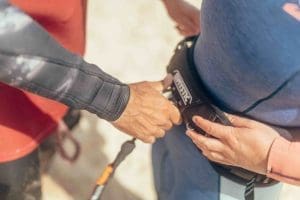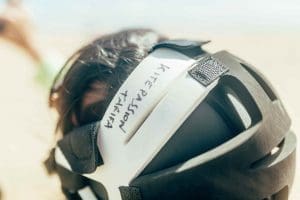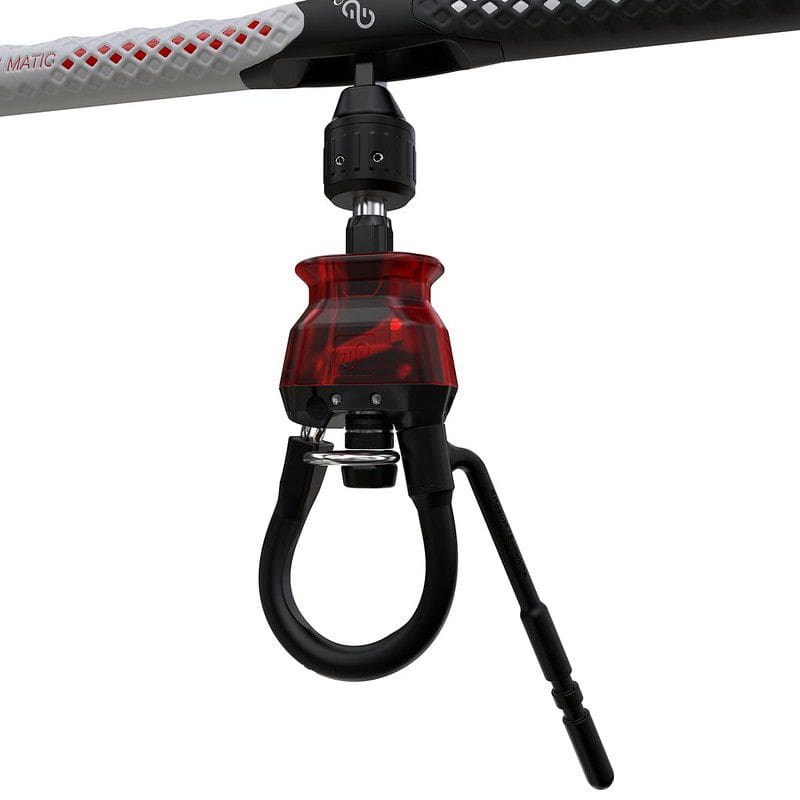For KitePassion Tarifa Kiteschool your safety is the most important thing and in this article you will learn closely everything related to kitesurfing in an enjoyable way.
The evolution of this sport has been huge, and it is one of the newest sports disciplines whose progression has been greater in the last 20 years.
Likewise, the evolution of safety systems has generated that in the beginning back in 2000 they really made kiteboarding a dangerous sport, but with the evolution of the material it is becoming safer.
Obviously, if we go sailing in Tarifa with 40 knots of lift or waves of 3 meters being a beginner or not having navigated in extreme conditions, they will turn an incredible sport into a bad time.
So first and most important security system: Be aware of our limitations and not get in when it is not the time.
THEORY ABOUT KITESURF FIRST DAY
Every time we start a lesson, whatever your level. From the first day we start with the theoretical parameters on the beach in a continuous rechecking of your level:
- Security systems
- Kite setting
- Universal signals
- Theory about the wind window
The first thing we teach you are the 3 security systems. On that first day we repeatedly indicated that magic phrase: “Let go of the bar” that will accompany you throughout the course and that if you understand from the first moment they will lead us to success in class and total control of the kite, which It is the number one objective that first day of class, to control the kite and that the kite does not control you.
Kitesurfing is a kite sport, if you control the kite and put it in your DNA a long way we will have traveled it. Then it will be time to enjoy with the Bodydrag and finally coordinate body – board – kite so that you learn the Waterstart.
But the first step is to release the bar to be safe and control the kite. Do not forget the 3 security systems that we detail later but that we anticipate:
- Release the Activate bar
- Quick Release System
- Leash (last connection to the kite)
TEACH SECURITY SYSTEMS
They have been explaining to us from an early age that we must have a foothold and that we must grab onto something when the going gets ugly. Our task that first day of class and throughout the entire course is to change that chip with you, with the student, so that they do just the opposite and is to release the bar so that the kite can depower and fall with its own inertia.
The million dollar question: Does the kite fall? The answer is yes, but zero problems with that since we teach you to relaunch from minute 1.

But in terms of safety, the kite will not pull you, which is the most important thing, since you do not pull the bar and therefore you do not generate power.
If you raise the bar the kite loses power, if you pull it you hunt more wind and generate more power, so in a situation of loss of control with excess power we can have an unpleasant situation and get to drag
However, the instructor will always be by your side holding you in those moments when trust is not your ally and that as you develop the class you will win.
Likewise, we used a small kite and short lines that first day. The distance between the lines has made the kite in its didactic aspect very safe and at the same time more controllable for different reasons:
- The kite being closer to you, it attends to your order before so it is more controllable
- We avoid the kiteloop by having shorter lines and the kite hitting the ground before it makes the loop or turn
- Less power equals more control. Power without control is useless.
Likewise, getting a little more technical, we can differentiate two types of security systems that you have to know from now on: Active security systems and passive security systems.
This blog will be of great help and will also save you time on the theoretical part on the beach the first day (normally the theoretical part is about 25 minutes) and we will go on to practice with the kite since all these concepts are familiar to you.
PASSIVE SECURITY SYSTEMS
2.- Activate the Quick release system, the second security system in order of importance and activation. If releasing the bar is not enough, we will have to activate this system so that the sports kite, that is, water is in the flag without any power only connected by the safety line once we have injected it.
A common circumstance in which we would have to activate is to cross the lines with another kite since we can have the power of two kites pulling us. So don’t think twice and if you come across another kite, release your quick release.
3.- Leash, this third safety system is activated when the situation is very dangerous and it is better to lose the kite than to remain connected to it even if it does not have power. However, in a scenario of waves that can take us to the bottom of the sea or kiteloops (turns of the kite on itself since the bar has turned in the wrong way) it is better to inject, but do not forget that we lose the kite .
In this case, do think twice before injecting. We have had students who at the first change released all security, that is, the three systems and obviously ran out of a kite. You have to measure and if we detect that it is better to lose the kite, leash out!!
ACTIVE SECURITY SYSTEMS
They are those that we do not have to activate and if they are necessary we do not have to activate them since they perform their function at any time without their activation being necessary. Examples of these active safety systems are the helmet or the buoyancy vest. We advise you to use the helmet as a beginner, until you feel like a fully fitted rider and are 100% independent.

At school, we always wear a kitesurf helmet and under no circumstances can we give a course without wearing a safety helmet. On the other hand, the same goes for the buoyancy vest.
There are different disciplines such as hydrofoil in which the use of these safety systems are necessary for your safety.
The fundamental parameter in all kinds of kitesurfing is the aspect of safety. During our first days of kite and once we go to the water to perform the bodydrag and waterstart exercises, the use of the buoyancy vest is mandatory and essential for your safety to be total.
We recommend a comfortable buoyancy vest with enough volume to help us float in case we need it in the middle of the sea once we are doing upwind bodydrags or departures from the water with the board.
LIFEJACKETS
We must differentiate between anti-impact vests, which do not have any buoyancy and its usefulness is to protect you from any blow during kitesurfing or any water sport.
It is not a life jacket as we normally know it since this, due to its voluminous appearance in the neck and chest, is a buoyancy vest that is ungovernable when it comes to mobility. However, this DAF-type vest gives you extra buoyancy and comfort, perfect for kitesurfing. In addition to having those 50 Newtons of buoyancy approved for kitesurfing.

From Kitepassion Tarifa we recommend the ION vest and wetsuit model that, due to its quality, makes the difference in this type of product: www.ion-products.com
On the other hand, when performing the waterstart exercise, the vest itself will give you an extra buoyancy that will make you get out of the water more easily.
When you are going to put the board on your feet, when you have to avoid the wave, when you are going to put the kite in power and want to perform all these fundamental steps to make your first lengths on the water, the lifejacket will provide you with greater stability for carry out your boards more effectively.
Once you are fully independent and start to skip and jump, forget about the vest and unless you do a long downwind for safety reasons, the vest, except on special occasions, will go down in history. However, at first your vest is part of your clothing.. Don’t forget: Safety first!
The most standardized teaching system, that of the IKO (International Kitesurfing Organization), marks a fundamental premise that we at KitePassion follow to the letter and that they explain everything from the parameter of safety from the moment we step on the beach.
- Fundamental when we get to the beach and there are other beginners (special attention to kiters who wear helmets, be careful with these), do not cross through their window from the wind, do not enter the leeward side of where the student is because if they make a mistake we run the risk of being hit by a kite.
-
Always ride the kite away from the area of the flag and people. Find a suitable and safe environment for the assembly of kites and lines. We know that this in Valdevaqueros is complicated in August, that is why we always look for the Lances Norte area which is much better for space, wind quality and safety.
-
Choose the appropriate material for the wind conditions. Semi-long or short lines, never kite above the wind range, avoiding extreme conditions or giving you some tips are essential.
See you on the water!!
More info: Juan I. Fernández
+34 615683051
https://www.tarifakitepassion.com
info@tarifakitepassion.com



